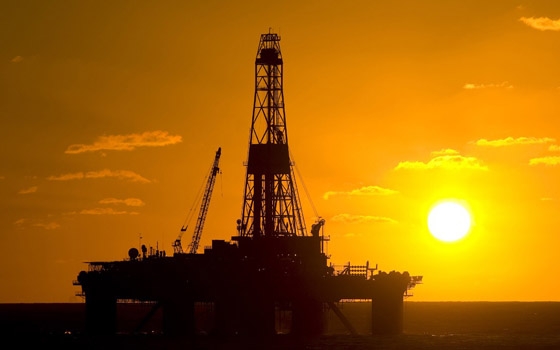Strong oil prices allied with higher output to boost the combined 2012 income of Gulf hydrocarbon producers by nearly $42 billion to their highest level in current prices since they began pumping crude more than 70 years ago.
From around $695.9 billion in 2011, the collective oil and gas export earnings of the six Gulf Cooperation Council (GCC) countries climbed to a record $737.5 billion in 2012, according to the Washington-based Institute for International Finance (IIF).
It was the highest income from oil sales in the GCC's history and more than double their oil revenue of nearly $305 billion in 2005, IIF said in a study.
The surge last year was a result of an increase in oil prices to their highest annual average of around $110 a barrel from nearly $106 in 2011 and a rise in the region's crude output as most GCC nations boosted production last year.
Saudi Arabia, the world's largest oil exporter, pumped around 9.88 million barrels per day in 2012 compared with 9.24 million bpd in 2011. The UAE hiked production to nearly 2.68 million bpd from 2.55 million bpd while Kuwait's supplies grew to around 2.78 million bpd from 2.57 million bpd and those of Oman to 0.81 million bpd from about 0.78 million bpd. Qatar's output slipped slight to 0.8 million bpd from 0.81 million bpd.
A breakdown showed Saudi Arabia's oil export earnings swelled to around $351 billion last year from $326 billion in 2011 while the UAE's income grew to a record high of nearly $124.7 billion from $119.2 billion in the same period.
The income rose to $107 billion from $104 billion in Qatar, to $35.9 billion from 34.6 billion in Oman and to $16.5 billion from $16.3 billion in Bahrain.
IIF projected the GCC's oil revenue to edge down to around $720 billion in 2013 and nearly $705 billion in 2014 but added they remain at their highest levels.
The report showed higher earnings boosted the GCC's current account surplus to a record high of about $375 billion in 2012 from $328 billion in 2011.
The bulk of the increase was in the current account of the UAE and Saudi Arabia, with their surplus swelling from $41 billion to $60.5 billion and from around $144.7 billion to $170 billion respectively, according to IIF.
ifpinfo
20 March
























































